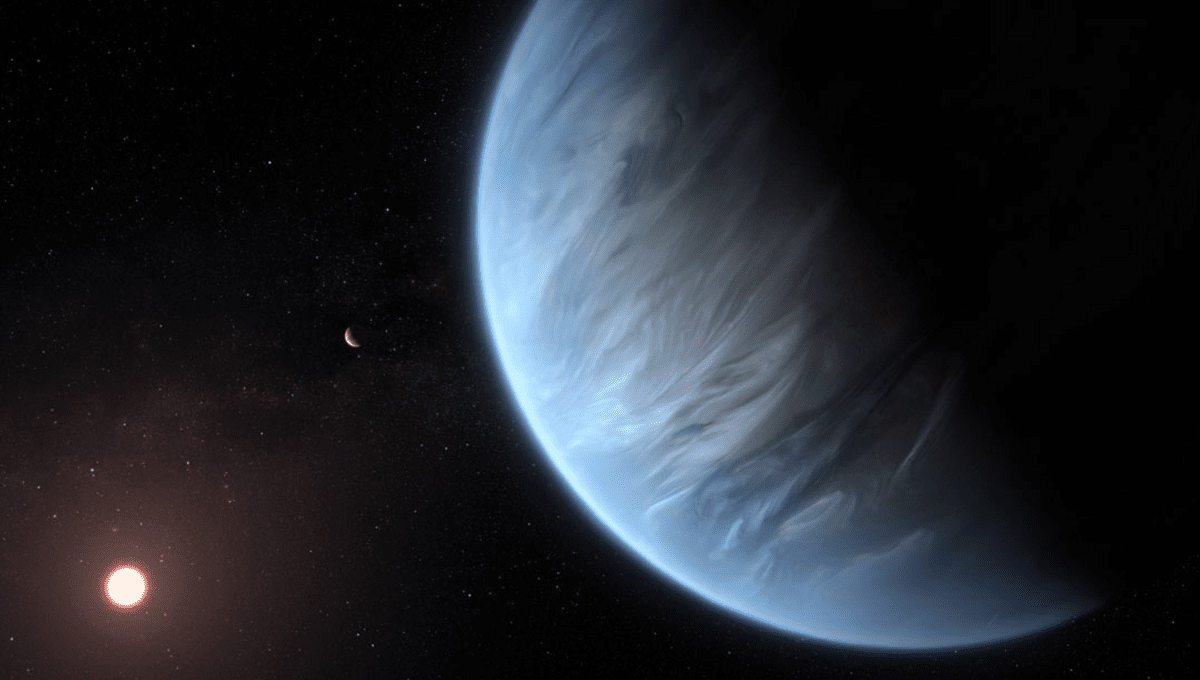
All good things must come to an end, and it’s best to plan beforehand. Revolutionary as the JWST has been, it has a much shorter life expectancy than the Hubble Space Telescope, let alone ground-based instruments. NASA has revealed plans for what could be the replacement to its replacement at the American Astronomical Society’s 241st meeting.
Their proposal is for an instrument that could carry the space telescope torch after the Nancy Grace Roman Observatory (NGRO), which is scheduled to launch around 2027, about the time the JWST ceases operations.
The future telescope does not have its final name yet, but NASA’s Mark Clampin told the audience that the project is being planned as the Habitable Worlds Observatory (HWO). Neither details nor funding have been confirmed, but as its working name suggests the project will be much more focused on a single task than the JWST or Hubble.
The JWST is already examining the atmospheres of planets orbiting nearby stars. This, however, represents just a small part of its operations, with more time studying the most distant galaxies, star-forming regions in our own, and a host of other targets. The HWO will be designed to look for “biosignatures”, gases in the atmospheres of rocky or watery planets within stars’ habitable zones.
The plans are designed to meet the call in astronomy’s decadal survey for an instrument capable of detecting signs of life on 25 nearby planets. Hopefully, it will find unambiguous evidence for a biologically created atmosphere before that – but 25 is considered sufficient to indicate life is very rare if none show positive signs.
Although it may have a clearer prime objective than its predecessors, the HWO will be capable of many other tasks. As probably the most powerful space telescope in operation for at least the initial years of its life, plenty of astronomers with other specialties will compete with exoplanet researchers for time directing it to their projects.
The HWO is expected to be a similar size to the JWST and likewise located at L2: the point 1.5 million kilometers (932,057 miles) from Earth where gravitational forces cancel out sufficiently for orbital stability.
The downside to this location is that repairs, upgrades, and refueling have been considered impractical for the JWST, which is why it’s not expected to last more than ten years. Hubble, meanwhile, is in its third decade thanks to several maintenance missions to Low Earth Orbit.
However, Clampin indicated that NASA thinks by the time the HWO launches, robot missions will be able to reach the site to service it. This will not only enable a much longer life than the JWST, but create the possibility of upgrades making it more powerful with time.
“Serviceability will be huge,” Aki Roberge of NASA’s Goddard Space Flight Center told ScienceNews. Although the mirrors would stay the same, the instruments used to process the light they collect could improve, creating what Roberge called a “mountaintop observatory at L2.”
The current HWO plans fall between two previous concepts NASA has floated in more detail, known as HabEx and LUVOIR. It’s expected to build on the success of the JWST’s unfolding multi-component mirror, keeping to a similar scale, since we now know how to do this, and using features that will get a test run on the NGRO.
LUVOIR’s design is much bigger and more ambitious, but also likely to take longer and be more expensive, suggesting the HWO might be an intermediary. HabEx has been foreseen as having a single mirror, individually larger than any of the JWST’s and therefore capable of crisper images, but smaller than the combined power of the JWST’s 18.
Unsurprisingly, considering the early stage of the plans, there is no firm timeline for the HWO other than Clampin talking about it launching in the 2040s. Considering how many delays were required for the JWST, it may be just as well to provide a decade-long range, particularly with the limitations on this portion of NASA’s budget.
Many other important but smaller and more specialized space telescopes are, or recently have been, in operation, including Gaia, Spitzer, Kepler and TESS. However, when it comes to large instruments operating in the optical or near-optical part of the spectrum the HWO is intended to continue a dynasty that runs from Hubble to the JWST and then the NGRO.
H/T ScienceNews
Source Link: NASA Reveals Plans For Space Telescope Designed To Hunt For Life